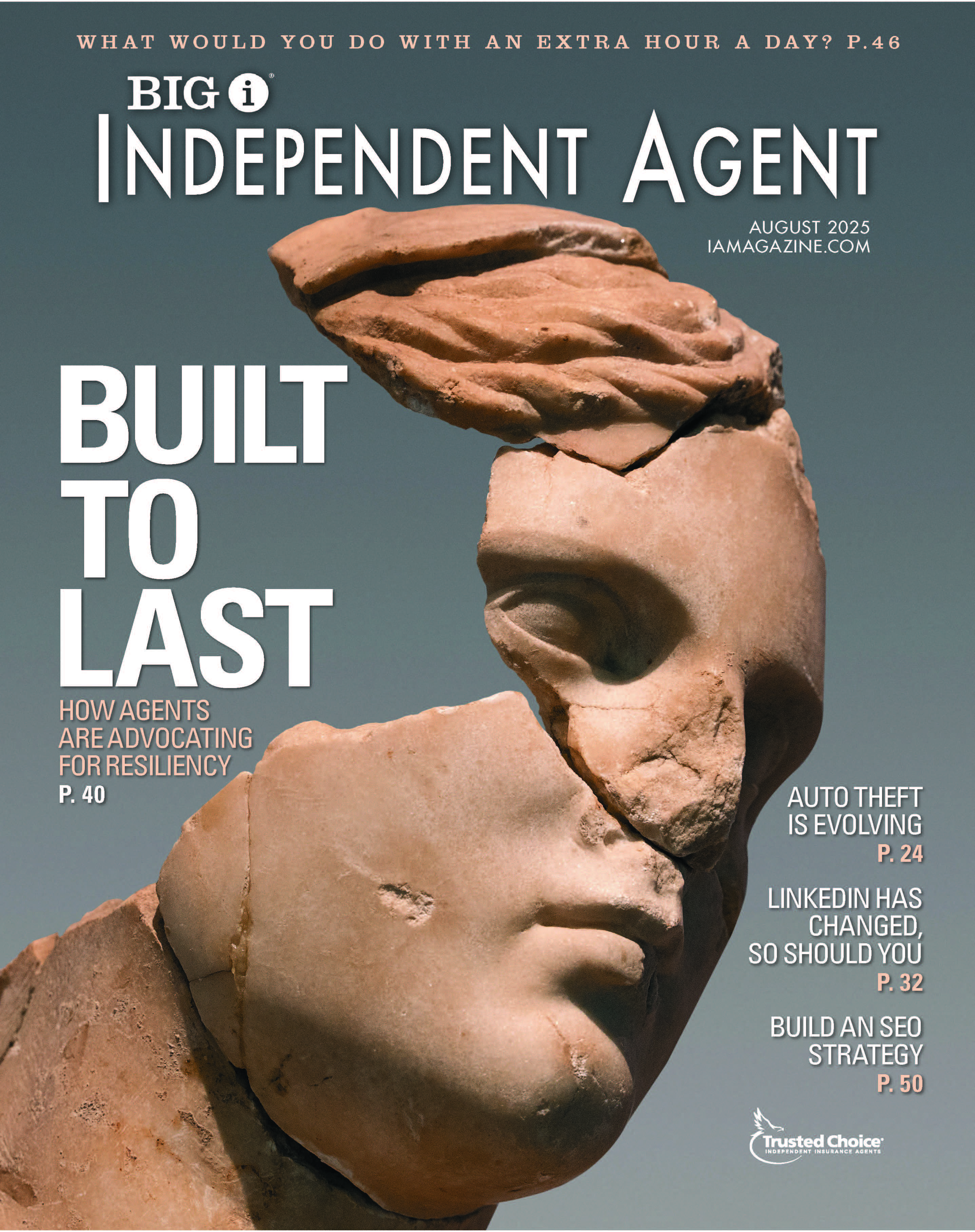The Dos and Don’ts of Agency Branding

By: Jordan Reabold
Does your agency’s brand resonate with prospects and clients? Probably not, according to new research.
It turns out many consumers feel disconnected with insurance brands: This year’s Harris Poll EquiTrend® study reports that overall, the insurance industry’s brand equity lags behind others in the broader financial services category.
Why? Todd William, CEO of Reputation Rhino, points out that insurance messaging doesn’t tend to put people at ease. “There is an inherent difficulty of marketing products based on the possibility of accident or death,” he says.
Want to fight the insurance industry’s negative reputation—and help foster more connection between consumers and your agency’s brand? Keep these dos and don’ts in mind:
Do make it familiar. Unlike other financial services industries, insurance doesn’t call for a consumer’s attention on a daily basis.
“Insurance is so relevant, and on an abstract basis, people know that. But they’re not going up to ATMs or applying for mortgages and receiving statements all the time,” points out Joan Sinopoli, vice president of brand solutions at Nielsen, which owns The Harris Poll. “There’s a variety of actions with other financial entities that you don’t have with insurance brands.”
To keep insurance front and center, The Starr Group in Greenfield, Wisconsin sends personal lines clients a quarterly newsletter and interacts with new business even more frequently in order to ensure they have all the contact information they need.
Do make it strategic. Social media is a no-brainer when it comes to branding and engagement, but Cheryl Michalek, marketing and social media specialist at The Starr Group, recommends using each platform for a different purpose.
“We’ve beefed up our social media presence by organizing our content and being consistent with posts,” Michalek explains. “Facebook is more of a culture, Twitter is a headline that drives prospects and customers to our website, and LinkedIn is for networking and recruiting.”
Customer service staff at The Starr Group also undergoes continuous training—but keeps it interesting. “Right now, we’re all reading a book about customer service written by an insurance guru,” says Maureen Arndt, vice president of operations at The Starr Group. “At the end of all the chapters, we do a lunch and learn where employees each identify what was good from that learning.”
Another nontraditional approach: Start from the inside out. Michalek explains, “The Starr Group brand begins internally. Management asked, ‘Who do we want to be?’ and defined the qualities the agency should possess. When the brand is reflected in internal marketing, the employees come to believe in the agency and what it stands for.”
Don’t alienate groups of customers. The Harris Poll found that women are more likely to struggle to feel a connection with auto and homeowners insurance brands compared to men—62% of women don’t feel as though auto insurance brands fit them, and 60% of women feel similarly about homeowners insurance.
To create a brand that’s gender-inclusive, Sinopoli recommends marketing to a family unit, rather than an individual. “When you’re talking to a family, make sure you’ve got both partners there. Your messaging should also feature women making insurance decisions or being a partner in those decisions.”
For example, The Starr Group makes a point to communicate with all members of a household. “When new business is written with the organization, they get a welcome letter from the president sent to their house,” Arndt explains. And all customers receive the same attention when they contact the agency: “Whether a man or a woman, we’re never going to make anyone feel less than,” she adds.
Don’t focus solely on insurance. “The most successful insurance sales professionals perform ongoing policy audits and are able to offer integrated financial services under one roof, so other investments are managed along with insurance,” William points out.
“Being consultative, looking at the brands you represent and putting options on the table engages customers and presents insurance in a different light,” Sinopoli adds. “It gives the customer a personal stake in what they choose.”
For independent agencies, creating a brand that’s distinct from the brands of the carriers it represents can be challenging. The solution? “Agencies have to think of themselves as the master brand,” Sinopoli explains. “They can borrow some equity from the brands they represent because they’re nationally known, they have strong equity and they’ve been around for a long time.”
William agrees. “We are judged, at least in part, by the company we keep. Independent agencies that partner with reputable, highly rated and internationally recognized insurance brands help establish client trust.”
Do get involved in the community. Because you’re a local business, you can foster a positive reputation by sponsoring events in your target market in order to differentiate from both competitors and the handful of national brands you represent, William suggests.
Throughout its 60 years of business, The Starr Group has supported the Special Olympics, Make-A-Wish®, and a number of local charities and fundraisers. And the agency’s iconic stone lions, Lionel and Lionardo, make it a staple in the community.
“People take pictures of the lions, which is a huge part of our community brand,” Arndt says. “On holidays, we dress them up. People send us cards and emails, and a lot of people post about them on social media to tell us they brightened their day on the way to work.”
Jordan Reabold is IA assistant editor.










